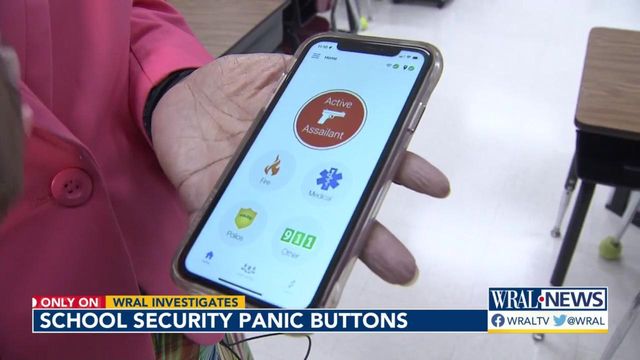WRAL Investigates: New high-tech safety tool coming to NC schools
The newly-signed state budget allocates $4.4 million to put panic alarms in North Carolina middle and high schools, but as of now, not elementary schools.
Posted — UpdatedThe newly-signed state budget allocates $4.4 million to put panic alarms in North Carolina middle and high schools, but as of now, not elementary schools.
WRAL Investigates went to a local school system that already implemented a panic button program to see how it works.
Hoke County Schools first started using the panic button in 2018 and tailored it to their needs.
"The importance of that is the make sure that not just they are receiving that information, but our staff members are receiving it as well, everybody from teachers to central office," said Dr. Chad Hunt, another assistant superintendent with the system.
The question many asked is: Why not just call 911?
Punch serves schools and agencies across the country with cloud-based alert systems. Punch Alert has been used to coordinate lockdowns and response to shooters, medical emergencies, even missing children. The texts, emails, calls and action plans are documented in a report.
Those who use the panic button say it's an important tool for school safety, but just one tool.
The panic button complements school resource officers, cameras, and locked doors, but isn't foolproof. Areas with poor cell service or schools with bad Wi-Fi may not get the most of the technology.
WRAL Investigates found one example where a panic button likely stopped a school shooting in Arkansas. A student told a teacher about a classmate who had a gun. The teacher hit the panic button, immediately locking down the school. Within minutes, the student was in custody and the weapon was seized.
While panic buttons won't prevent all school shootings, they can help save lives with time.
"Nobody can say it's never going to happen," Ramseur said. "We can't, but what we say is we're prepared."
The state budget also includes $220,000 in recurring funds for upkeep on the system once education officials select a vendor. The bid deadline is Aug. 18, 2022. The goal is have the panic system up and running by Jan. 15, 2023.
• Credits
Copyright 2024 by Capitol Broadcasting Company. All rights reserved. This material may not be published, broadcast, rewritten or redistributed.





